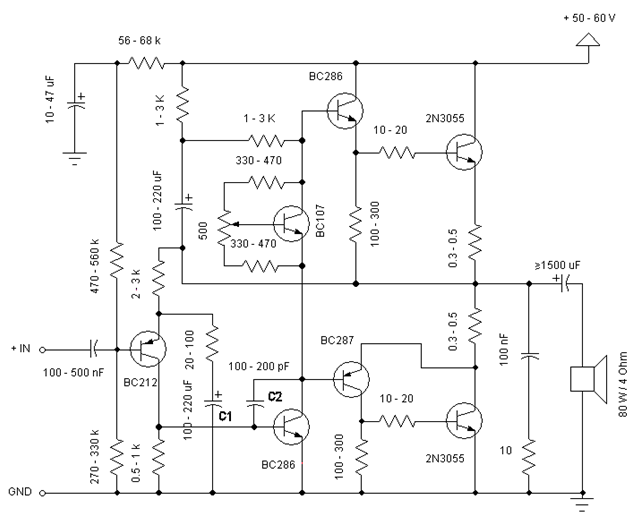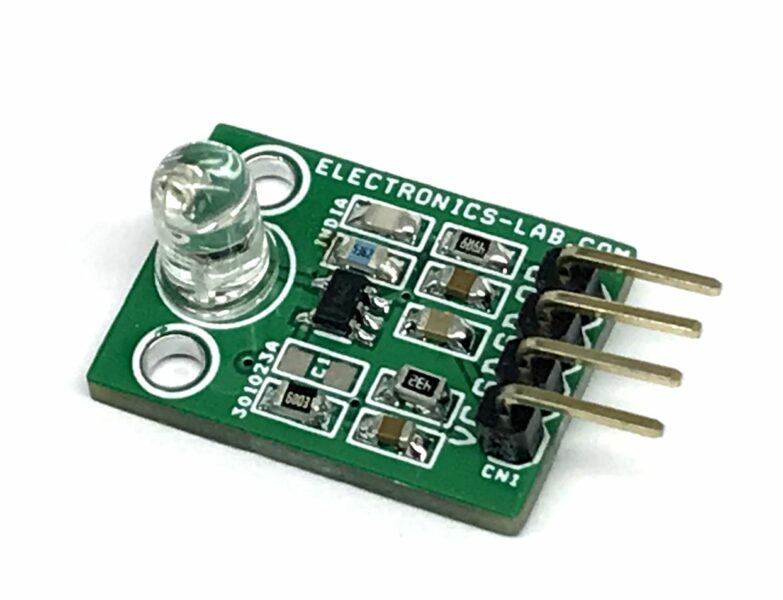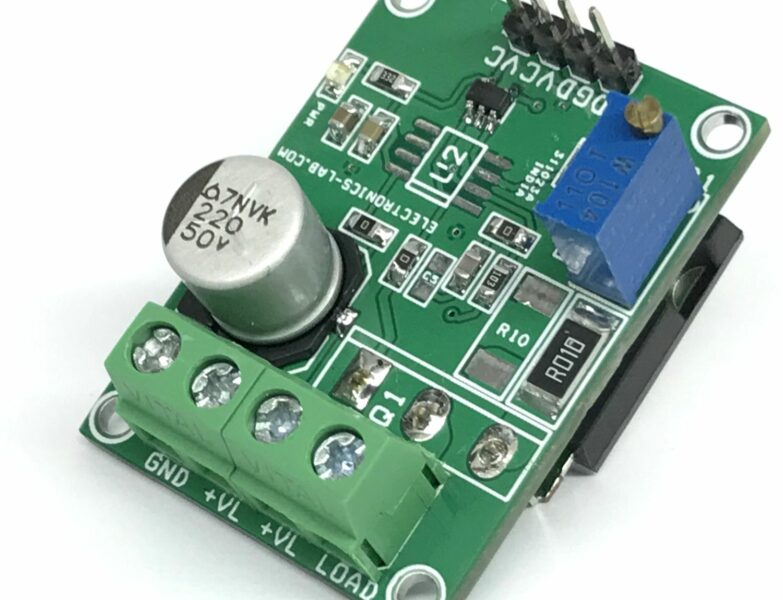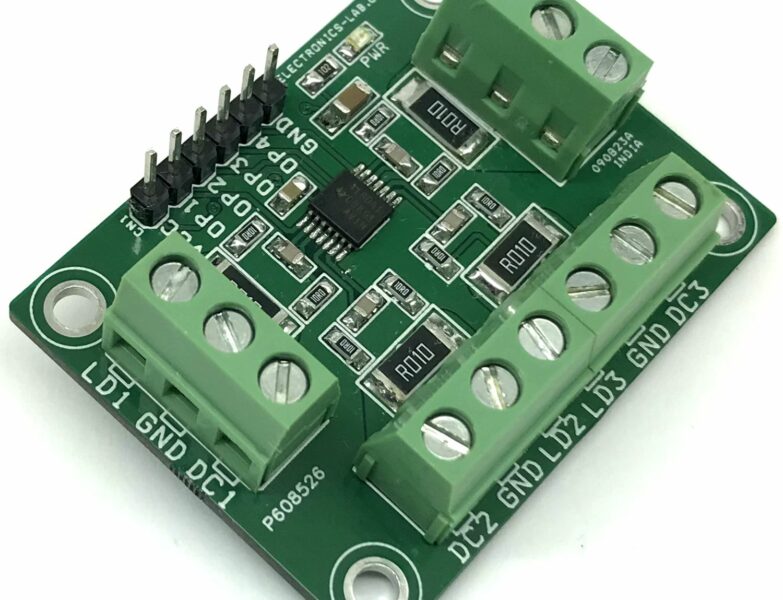2N3055 Power Amplifier
- Jacint Chapo
- jacintch@gmail.com
- 41.020 Views
- moderate
- Non tested
Simple and low cost. The optimal supply voltage is around 50V, but this amp work from 30 to 60V. The maximal input voltage is around 0.8 – 1V. As you can see, in this design the components have a big tolerance, so you can build it almost of the components, which you find at home. The and transistors can be any NPN type power transistor, but do not use Darlington types… The output power is around 60W.
Comments
- capacitor C1 regulates the low frequencies (bass), as the capacitance grows, the low frequencies are getting louder.
- capacitor C2 regulates the higher frequencies (treble), as the capacitance grows, the higher frequencies are getting quieter.
- this is a class B amplifier, this means, that a current must flow through the end transistors, even if there is no signal on the input. This current can be regulated with the 500Ω trimmer resistor. As this current increases, the sound of the amplifier gets better, but the end transistors are more heating. But if this current decreases, the transistors are not heating so much, but the sound gets worse…
Jacint Chapo – 14/9/2005









I’ve build at least 30 of these amplifiers andthey all work still after 5 jears very well.I use them in self powered loudspeakers and as poweramplifier for small and middel events.
They are very trustfull andpowerfull. You realy can use almost any combination of parts in resistors, capasitors and transistors. Real important is a good transformer and the fuses need to be T 3,15 a
Dont be shy and at least give it a try and you’ll be surprised of the sound.
If you cann’t find the small transistors, no problem there are enough alternatives for them.
A good heatsink does not mean a big one, but i advice to use an old fashioned one because you can it heat up firmly.
If you want to try this please try to make your first one on a pice plastic and mount it point to point like the drawing.
I wish you all a lot of pleasure with this old fashioned ampli witha very modern sound.
Still one advice: please use well tested or new parts and not ( you may decite) often used parts.For resistors it’s a pre to use metalfilm. I’m sure you’ll enjoy. Ferdi
Hi can anyone tell me what wattage resistors to use please? Many thanks.
try 5 Watt resistors where power needs to flow (like collectors, emitters.) – otherwise – use 1/2 Watt resistors